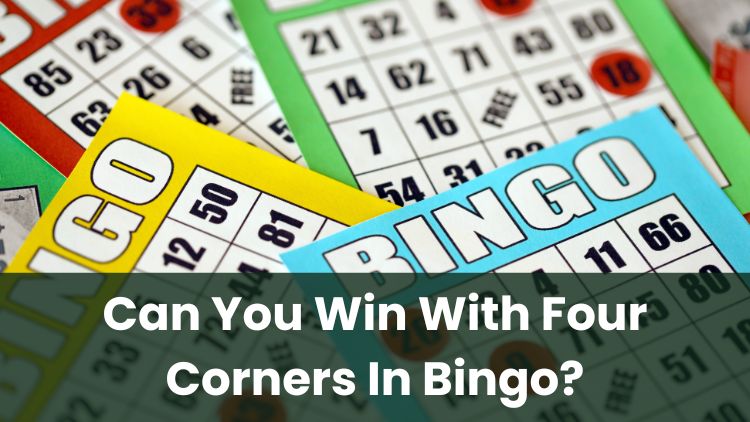
Bingo has long been a favourite across the UK, known for its simple rules and social atmosphere. While most players are familiar with winning by completing a line or a full house, there are other patterns that can bring a twist to the game—one of them being the "four corners."
So, what does winning with four corners actually mean, and how does it work within a typical game of bingo? It’s a variation that some players come across, but not everyone is clear on whether it counts as a win or just a fun challenge.
In this post, we’ll take a closer look at the four corners pattern, how it fits into different types of bingo games, and whether it can lead to a real win.
What Does Four Corners Mean In Bingo?
In bingo, the "four corners" pattern is a straightforward concept. To win with this pattern, players need to mark off the four numbers located in the corners of their bingo card—specifically, the top left, top right, bottom left, and bottom right squares.
These corner positions are easy to identify, as they are the outermost squares on the card. Unlike traditional bingo patterns that focus on completing a full line, the four corners pattern only requires marking off these four specific spots.
While this might seem like an easier pattern to complete since it involves fewer numbers than others, it's important to remember that the four corners may not always be considered a winning pattern in every game. Each bingo variation may have different rules, so it's always a good idea to check the instructions before you begin.
Four Corners Bingo Rules Explained
In bingo, the four corners pattern requires players to mark the numbers in the four outermost corners of their bingo card: top left, top right, bottom left, and bottom right.
However, whether the four corners pattern is considered a winning configuration can vary depending on the game or platform. Some bingo halls or online sites may include it as a valid winning pattern, while others might not. As such, it’s important for players to review the specific rules of the game before they begin.
Knowing how the four corners pattern fits into the game’s rules may help players plan their approach more effectively. Always remember to play with an understanding of the game’s guidelines and keep the experience enjoyable.
Additionally, practising responsible gambling is key. Setting personal limits and staying mindful of your participation ensures that bingo remains a responsible activity for everyone.
Four Corners In Bingo Example
To understand how the four corners pattern works in bingo, let's look at a typical bingo card. The card features a 5x5 grid with numbers spread across five columns and five rows.
As mentioned earlier, in the four corners pattern, players focus on marking the numbers in the four corners of the grid—top left, top right, bottom left, and bottom right.
For example, imagine a bingo card where the numbers in these positions are: 1 in the top left, 15 in the top right, 61 in the bottom left, and 75 in the bottom right. If these numbers are called out during the game, the player can mark them off.
To win with the four corners pattern, the player needs to mark all four of these corner numbers. If this happens and the game recognises the four corners as a valid winning pattern, the player may be declared the winner.
It’s important for players to review the specific rules of the game they’re playing, as different platforms or bingo halls may have slightly different guidelines. As always, keeping the experience enjoyable and practising responsible gambling can help ensure a balanced approach to the game.
What Patterns Can You Win With In Bingo?
Bingo offers a range of patterns that players can aim for to try and win, adding variety and interest to the game. The specific patterns available often depend on the type of bingo game being played.
The most common pattern is the straight line, where players need to mark off a full row, column, or diagonal on their card. This is a popular and straightforward way to win in many bingo variations.
Another classic pattern is the full house, where all the numbers on a bingo card must be marked off. This pattern is especially common in 90-ball bingo, where players aim for complete coverage of their card.
In addition to these, many games feature patterns shaped like letters or numbers, such as a "T" or a "7." Some variations may even include more intricate patterns that resemble objects or symbols, depending on the rules of the specific game.
While these patterns offer different ways to try and win, it’s important to remember that bingo is a game of chance. Winning is never guaranteed, so always play with that in mind. Understanding the rules and playing responsibly ensures that bingo remains an enjoyable pastime activity.
**The information provided in this blog is intended for educational purposes and should not be construed as betting advice or a guarantee of success. Always gamble responsibly.
